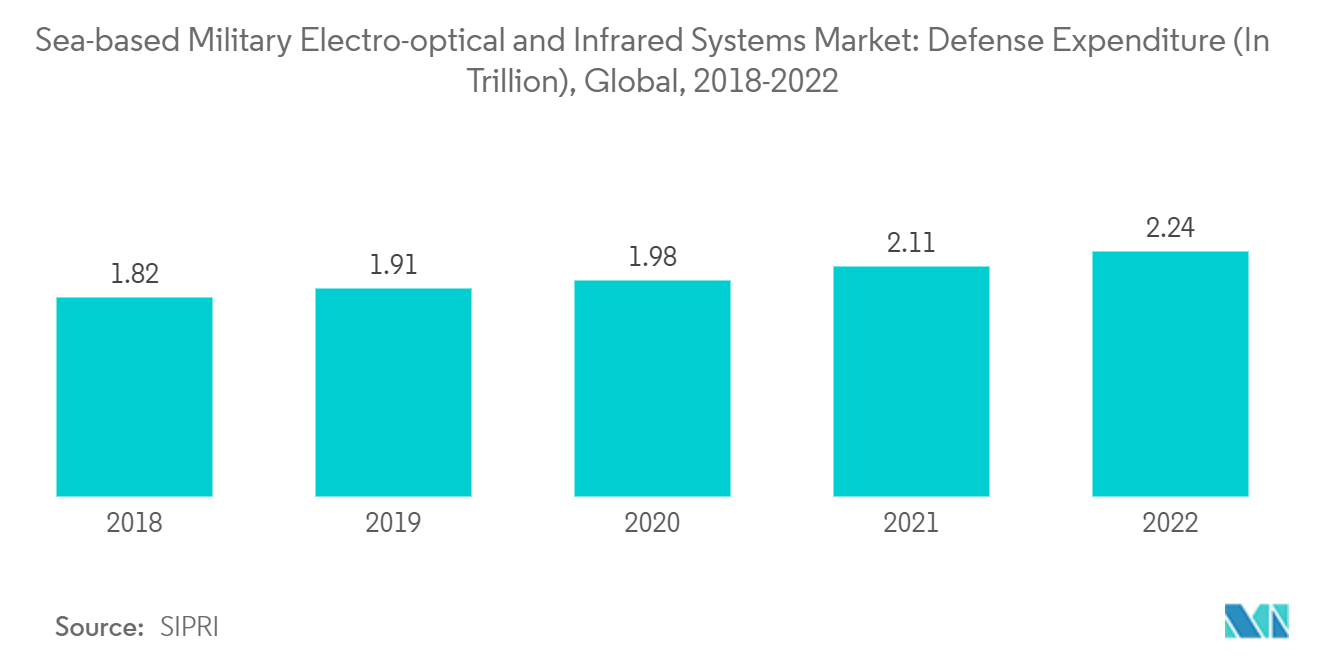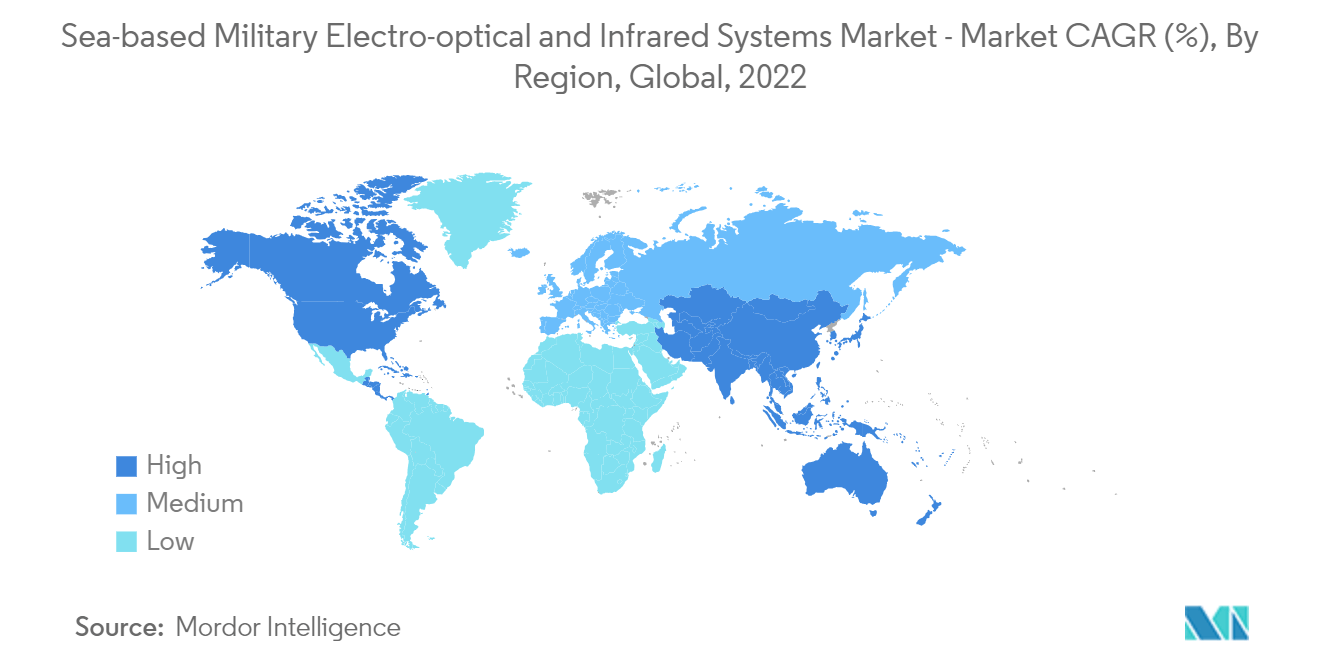Market Trends of Sea-based Military Electro-optical And Infrared Systems Industry
Hyperspectral Segment is Projected to Showcase Highest Growth during the Forecast Period
The growth of territorial conflicts and border issues increased the risk for militaries' maritime assets, which led to increasing emphasis on surveillance, threat detection, and target identification at sea. As modern combats involve a greater emphasis on these capabilities, armed forces primarily focus on incorporating and integrating sophisticated and advanced hyperspectral imaging technologies into their naval vessels. The growth of this segment is expected to increase due to rising military expenditure and various modernization efforts by major global powers. For instance, in 2022, the global military expenditure reached USD 2,240 billion, a growth of 6% from 2021.
Navies need to obtain motion imagery from EO/IR sensors that provide day-night, long-range eyes on the target, which improves their ability to identify targets, perform threat assessment, assess intent according to the rules of engagement, and support weapon engagement through automatic tracking and fire control solutions through line-of-sight. Hence, various companies are developing advanced hyperspectral imaging EO/IR solutions for improved protection in the sea. For instance, in March 2023, an Australian company named Arkeus launched its cutting-edge hyperspectral sensor solution called the Hyperspectral Optical Radar (HSOR). This advanced technology is designed for a range of applications, including ISR in the sea and improving maritime domain awareness. As the naval vessels are isolated from the terrain, it becomes important for them to possess advanced threat detection and countermeasure systems for their long-term survival from impending threats. This is driving the growth of the R&D segment currently. Such developments are expected to drive this segment's demand during the forecast period.

Asia-Pacific to Exhibit the Highest Growth Rate during the Forecast Period
The demand for sea-based military EO/IR systems market in Asia-Pacific is driven by increasing tensions and conflicts, particularly in the South China Sea, the East China Sea, and the Indian Ocean. Many nations, including China, have directed their attention toward upgrading their naval capabilities by investing significantly in the latest advancements in EO/IR technologies. China is actively integrating its Over-the-horizon Surface Wave (OTH-SW) radars and electro-optical sites into its anti-ship missile systems. The combined system provides accurate targeting information about enemy ships and submarines.
For instance, in April 2023, China's latest Type 055 destroyer was officially inducted into the country's Navy. The destroyer features navigation radars, various communication and intelligence systems, electronic warfare support measures (ESM), electronic countermeasures (ECM), electro-optic (EO) sensors, laser-warning systems, optronic jammers, and datalink systems. Similarly, in December 2023, Japan started building 24 new FFM missile frigates called the Mogami class. These are being procured in two batches of 12 each. These frigates feature Mitsubishi Electric’s OPY-2 X-band multi-purpose active electronically scanned array (AESA) radar and OAX-3 electro-optical/infrared (EO/IR) sensors. Such developments in the naval industry and ongoing naval vessel procurement and modernization programs are expected to drive growth for the sea-based military electro-optical and infrared systems market during the forecast period.


